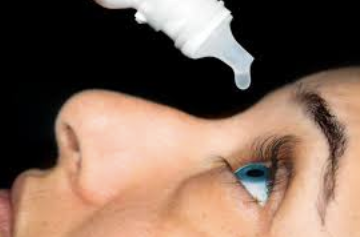
Eye migraines are a rare disease characterized by a temporary loss of vision in one eye or even temporary blindness. Eye migraines are caused by reduced blood flow or vascular spasms in the retina or behind the eye.
In eye migraines, the patient's eye vision usually returns to normal within an hour. Eye migraines can be painless or can occur with migraines (or followed by).
Unfortunately, the term "eye migraine" is commonly used to describe a more common (harmless) disease - called visual migraines or preeclampsia - characterized by temporary visual impairment, which usually disappears within 30 minutes.
Unlike eye migraines, visual migraines usually affect both eyes.
Now, let's take a closer look at eye migraines and visual migraines:
Eye migraines and visual migraine symptoms :
Eye migraine symptoms usually include a small blind spot that affects the central vision of one eye. This blind spot becomes larger, preventing you from driving safely or reading with affected eyes.
In some cases, the entire field of view of one eye may be affected. Typically, the episode lasts less than an hour.
Visual migraine symptoms may vary and may include:
1. Flashing blind spot near the center of the field of view or near the center.
2. A wavy or jagged ring of colored light around the central blind spot.
3. Blind spots that migrate slowly throughout the field of view.
The symptoms of visual migraines usually affect both eyes and last for 30 minutes or less. Visual migraine symptoms may occur shortly after they disappear, or they may not have a headache.
If you experience blind spots or other visual impairments and are not sure if it's an eye migraine or a visual migraine, cover one eye at a time. If visual impairment occurs in only one eye, it is likely to be an eye migraine. If it affects both eyes, it may be a visual migraine.
But don't take any chances. If you suddenly encounter any blind spots in your field of vision, call or consult your ophthalmologist immediately to determine if it is harmless or may be a sign of more severe symptoms, such as retinal disengagement.
What causes eye and visual migraines?
Eye migraines are thought to have the same cause as migraines.
Migraines have a genetic basis, and some studies have shown that up to 70 percent of people with the disease have a family history of migraines.
According to the World Health Organization, migraines appear to be caused by the activation of the deep brain mechanism, which releases inflammatory substances around nerves and blood vessels in the head and brain.
Imaging studies have found that blood flow to the brain changes during eye migraines and migraines. But why this happens and why eye migraines and visual migraines are caused spontaneously remain unknown.
Common migraine "triggers" (including eye migraines and visual migraines) that can cause a person's migraine attack include certain foods, such as aged cheese, caffeinated beverages, red wine, smoked meat and chocolate.
FOOD ADDITIVES, SUCH AS MSG AND ARTIFICIAL SWEETENERS, CAN ALSO CAUSE MIGRAINES IN SOME PEOPLE.
Other potential migraine triggers include cigarette smoke, perfumes and other strong odors, harsh or flickering lights, lack of sleep and emotional stress.
Treatment and prevention.
As already pointed out, visual impairments caused by eye migraines and visual migraines usually disappear within an hour or less without treatment.
If you perform tasks that require clear vision, stop what you are doing and relax until your vision returns to normal when you have eye migraines or visual migraines.
If you are driving, stop at the side of the road and wait for your visual impairment to be completely removed.
If you experience visual impairments accompanied by migraines, consult your family doctor or neurologist to assess your migraine attacks.
Your doctor can advise you on the latest medications for migraines, including those designed to prevent future seizures.
It's a good idea to log your diet and activities before an eye migraine or migraine precursor attack to see if you can identify triggers that may be avoided in the future.
If your eye migraine or migraine precursor (visual migraine) appears to be stress-related, here are some simple ways to reduce the frequency of migraine attacks without medication:
. Eat healthy meals regularly.
. Avoid common migraine triggers.
. Get plenty of sleep.
. Try stress-reducing methods such as yoga and massage.



